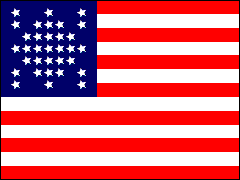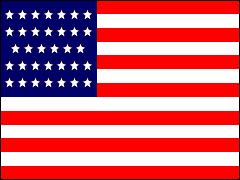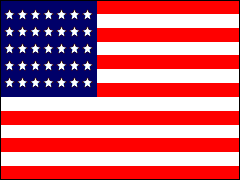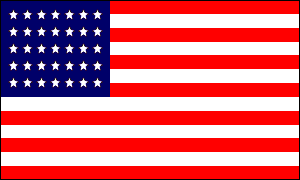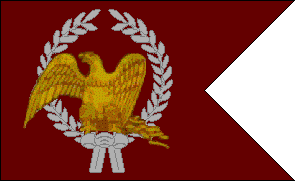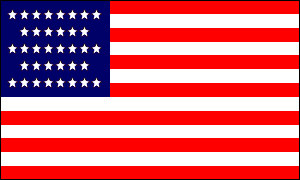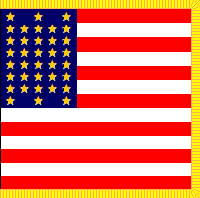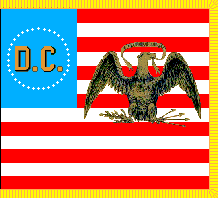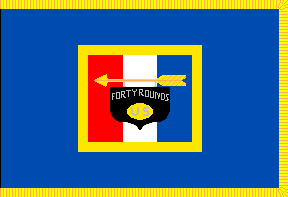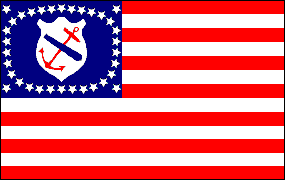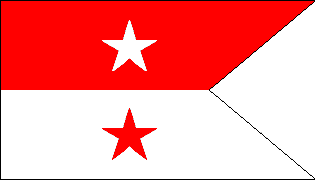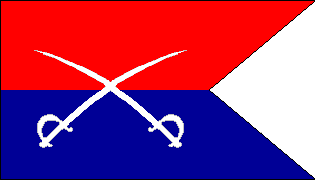|
|
|
GARRISON & HEADQUARTERS
FLAGS |
|
|
|
THE ARMIES OF THE
UNION • 1861-65 |
|
Permanent installations of the Civil War-era US Army flew garrison flags of considerable size, a fifteen- to twenty-foot hoist being not uncommon. One such was the famous Fort Sumter Flag with its 33 stars arranged in a diamond pattern. This practice, unofficial but common, facilitated the addition of stars at a time when new states were being admitted to the Union on a regular basis. During the war garrison flags typically had their stars arranged in rows. Smaller versions of the garrison flags, called storm flags, were provided for use in inclement weather. When Fort Sumter's large garrison flag was brought down during the Confederate bombardment (12-13 April 1861) it was replaced by a storm flag, raised on an improvised flagpole on the rampart. On 14 April 1865, four years to the day after Fort Sumter was surrendered, the smoke-stained, shot-pierced garrison flag was hoisted once more over the ruins of the fort by Major General Robert Anderson who, as a major, had been Sumter's commander in 1861. The Stars and
Stripes was also the most common headquarters flag of the Union
armies. It marked the headquarters and served as the personal flag
of the successive commanders of the Army of the Potomac from the
beginning of the war until 1864. When Major General Ulysses S. Grant
came east to take up the duties of General-in-Chief of the Union
armies he decided to locate his headquarters in the field alongside
that of the Army of the Potomac. To avoid confusion the headquarters
flag of that army, commanded by Major General George G. Meade, was
changed to a swallowtailed flag with a maroon field and a golden
yellow American eagle over a silver wreath. Major General William T.
Sherman's headquarters flag was similar to the regimental National
Color, with gold stars and fringe. During General Ambrose E.
Burnside's period of independent command of the IX Corps, his
headquarters flag was the Stars and Stripes with the corps badge in
the canton. When IX Corps was consolidated with the Army of the
Potomac, a corps flag of
the standard pattern replaced the national flag variant.
Other personal flags, such as those of Major General Philip H.
Sheridan and Brigadier General George A. Custer, were variants of
cavalry brigade and division distinguishing flags. |
